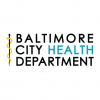Philly is ‘floating on opioids’: Civic leaders address drug crisis, share solutions (WHYY)
Saturday Apr 21st, 2018
Shortly after Michael McMahon won Staten Island’s district attorney’s race in 2015, a young man collapsed on the street where he lived in the middle of the night.
The 22-year-old, whom McMahon had watched grow up, died of a heroin overdose in front of his parents’ house. And so when McMahon started his new job as district attorney, one of the first things he did was ask for the file on that young man’s death.
“I was surprised to learn there was no investigation. It was closed because it was considered an accidental death, and nothing was being done,” McMahon said. “So I sat down with the police department and said, ‘Why don’t we follow up with an overdose and investigate it as if it’s a crime scene?’ ”
From there McMahon, started an intensive overdose response initiative. It has involved investigating and responding to every single overdose, fatal or not, and better coordinating with law enforcement and public health officials. Since then, overdose deaths have finally started to decline on the island.
McMahon recounted this story and the approach he took as part of a panel organized by Pew Charitable Trusts in Philadelphia Friday morning. The goal was to share lessons across cities, as Philadelphia wrestles with one of the nation’s highest overdose death rates amid a drug crisis that does not appear to be letting up.In 2015, as Baltimore’s overdose deaths climbed, the health commissioner there stepped up overdose prevention efforts, issuing a standing order that allowed anyone to obtain the overdose reversing medication, naloxone, from a pharmacy without a prescription. (Pennsylvania has since followed suit.)
Evan Behrle, special adviser for opioid policy with Baltimore’s health department and a panel participant, said it didn’t stop there. Health workers spread the message “far and wide,” visiting every single pharmacy and distributing the medication to residents deemed most likely to see an overdose.
Teams have also become really aggressive, he said, in responding to overdose data in real time.
“If there’s ever a spike — an unusual number of overdoses — in one really small area, we’ll send an alert, and that’s where we send our outreach teams with naloxone, to do linkage to care,” Behrle said.
